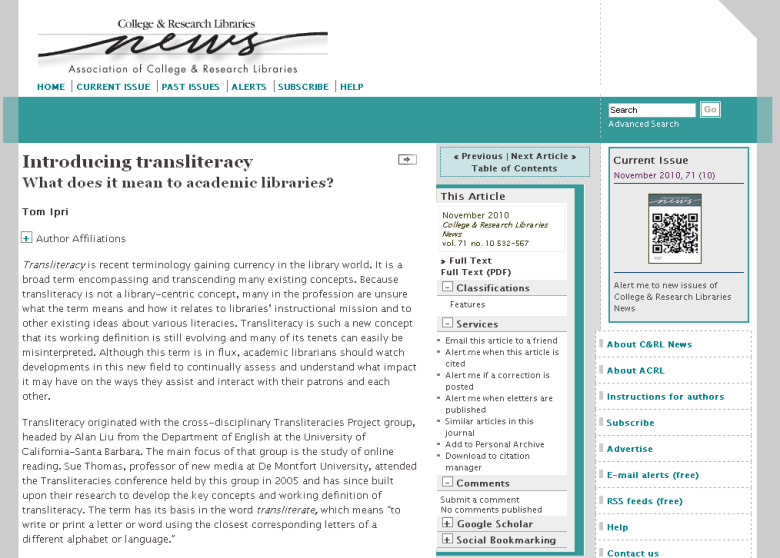Our very own Tom Ipri has an article about transliteracy in College & Research Libraries News
Transliteracy is recent terminology gaining currency in the library world. It is a broad term encompassing and transcending many existing concepts. Because transliteracy is not a library-centric concept, many in the profession are unsure what the term means and how it relates to libraries’ instructional mission and to other existing ideas about various literacies. Transliteracy is such a new concept that its working definition is still evolving and many of its tenets can easily be misinterpreted. Although this term is in flux, academic librarians should watch developments in this new field to continually assess and understand what impact it may have on the ways they assist and interact with their patrons and each other.
The resources he makes reference to:
- Transliteracies Project: Research in the Technological, Social, and Cultural Practices of Online Reading
- Sue Thomas, Chris Joseph, Jess Laccetti, Bruce Mason, Simon Mills, Simon Perril and Kate Pullinger, “Transliteracy: Crossing Divides,” First Monday, December 3, 2007,
- Susie Andretta, “Transliteracy: Take a Walk on the Wild Side”, The International Federation of Library Associations Conference 2009,10,
- ALA: Committee on Literacy






